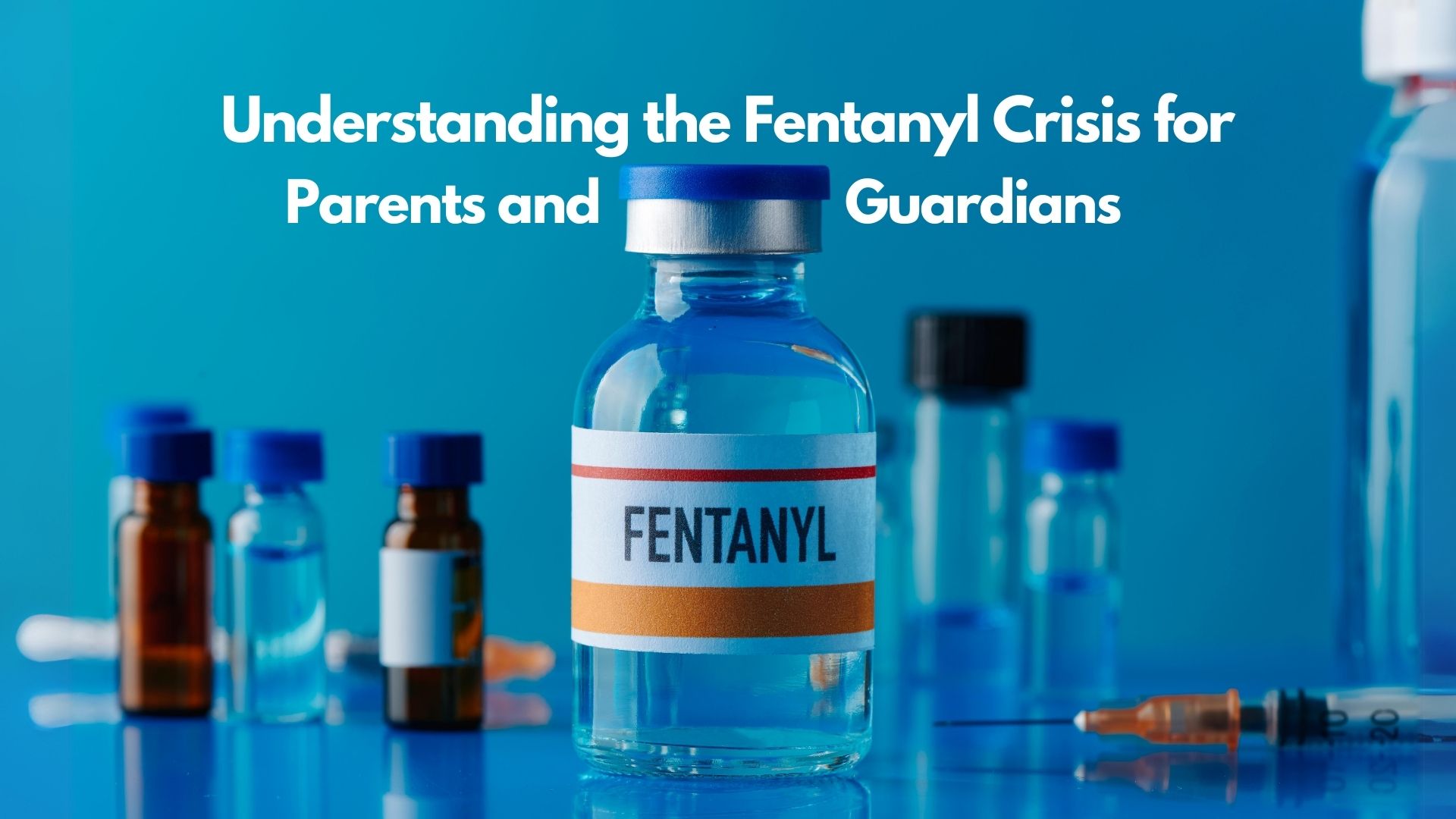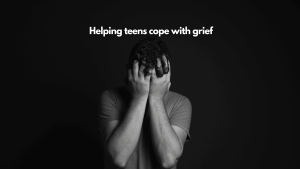We recently hosted a webinar on the critical issue of fentanyl and its impact on our communities. We strongly encourage every parent and guardian to actively educate themselves and engage with their communities about the risks associated with fentanyl. A great way to start is by checking out Cyber Safety Cop‘s recent webinar, “The Fentanyl Epidemic: Three Perspectives on the Leading Cause of Death for Young People.” This webinar offers a comprehensive look at the fentanyl crisis through the perspectives of experts in various fields, providing valuable insights into prevention, treatment, and community action. Stay informed, talk openly with your children about the dangers of drug use, and utilize the tools and information available to protect your family.
Introduction: A Silent Epidemic in Our Midst
The fentanyl crisis — this silent epidemic is sweeping through our communities, often unnoticed until it affects our own lives directly. As parents and guardians, your role in understanding and addressing this threat is vital. This blog is designed to educate and empower you with the necessary knowledge to protect your loved ones.
The main goal of this blog is to shine a light on the fentanyl crisis—a growing threat that is stealthily claiming the lives of young individuals across the nation. We aim to provide you with insightful information and practical guidance to help you navigate this challenging landscape. By staying informed, you can become a critical line of defense in protecting your family and community.
What is Fentanyl?
Fentanyl is a synthetic opioid, originally developed for pain management in medical settings, such as for cancer patients. However, due to its extreme potency—approximately 50 to 100 times stronger than morphine—it has become a popular but dangerous substitute for other opioids in the illegal drug market. This drug can be fatal in very small doses, and its presence is often unknown in mixed drug supplies, making every use a game of Russian roulette.
Importance of Awareness
Understanding the immense dangers of fentanyl is essential for every parent and guardian. This knowledge equips you with the power to discuss the risks of drug use with your children effectively and to recognize early warning signs of drug exposure. Awareness also fosters a community-wide vigilance necessary to combat the spread and influence of this deadly drug. By educating ourselves and our children, we create a safer environment for everyone.
Chapter 1: Unmasking the Danger
In this chapter, we explore the alarming potency of fentanyl and address some common misconceptions that might make it seem like a distant problem, rather than the immediate threat it truly is. Understanding the true nature of fentanyl is the first step in guarding against its dangers.
The Potency of Fentanyl
Fentanyl is one of the strongest opioids available, significantly more potent than heroin or morphine. To put it into perspective, fentanyl is about 50 to 100 times stronger than morphine. This means even a tiny amount, barely visible to the naked eye, can cause an overdose and potentially be fatal. Its high potency is exactly what makes fentanyl so deadly; it’s easy to take a lethal dose without realizing it, especially if it’s mixed into other drugs without your knowledge.
Common Misconceptions
It’s natural to think, “It won’t affect my child,” but this belief is dangerous. Fentanyl is infiltrating communities everywhere, across all socio-economic backgrounds. It can be hidden in counterfeit pills made to look like less dangerous medications or recreational drugs, meaning anyone who experiments even once could be at risk. Here are a few myths we need to dispel:
- “Fentanyl is only a problem for habitual drug users”: Not true. Fentanyl has been found in drugs used recreationally, including pills sold as something else entirely.
- “My child knows better than to use drugs”: Even well-informed and cautious kids can make impulsive decisions, especially under peer pressure or in situations where they don’t realize what they’re taking.
- “We live in a good neighborhood. It won’t happen here.”: Fentanyl doesn’t respect geographic or economic boundaries. It’s a widespread issue affecting rural areas, small towns, and big cities alike.
By understanding the potency of fentanyl and confronting these misconceptions head-on, we as parents and guardians can better prepare to protect our children from this unseen danger.
Chapter 2: How Fentanyl Affects the Body
Understanding how fentanyl affects the body can help us recognize the signs of exposure and understand the seriousness of its impact. This chapter discusses the immediate effects of fentanyl use and the potential long-term consequences for those who survive an overdose.
Immediate Effects
Fentanyl acts extremely quickly, often within minutes of entering the body, primarily affecting the brain’s area that controls breathing. Its most dangerous effect is the rapid suppression of breathing—fentanyl can slow down breathing significantly or even cause it to stop altogether, a condition known as respiratory depression. This lack of oxygen can quickly lead to unconsciousness, coma, or death if not treated immediately. The risk is incredibly high because users often do not realize they have ingested fentanyl, thinking they are using a less potent drug.
Long-term Risks
For those who survive a fentanyl overdose, the road to recovery can be fraught with challenges, including long-term health issues. One of the most concerning potential outcomes is neurological damage due to the lack of oxygen that occurs during respiratory depression. This damage can manifest as cognitive difficulties, memory problems, and impaired motor skills. Additionally, survivors might experience psychological effects such as anxiety, depression, and post-traumatic stress disorder (PTSD), which stem from the overdose experience itself and the ongoing challenges of physical recovery.
The effects of fentanyl are severe and can impact nearly every aspect of an individual’s health and well-being.
Chapter 3: Recognizing Signs of Fentanyl Use
Being able to identify the signs of fentanyl use is crucial for early intervention.
Physical Indicators
Fentanyl, like other opioids, produces distinct physical symptoms that can serve as warning signs. Here are some common indicators to watch for:
- Drowsiness: Excessive sleepiness or trouble staying awake can be a red flag.
- Altered Alertness: Periods of hyperactivity followed by sudden nodding off.
- Pinpoint Pupils: Noticeably small pupils that do not respond normally to light changes.
- Slowed Breathing: Shallow, slow breathing that seems unusual or alarming.
- Confusion: Difficulty concentrating or seeming disoriented.
- Physical Weakness: Lacking energy or strength, unusual clumsiness.
- Cold, Clammy Skin: The skin may feel cool and damp to the touch.
Behavioural Changes
Behavioural changes can also indicate drug use, especially if they represent a significant departure from your child’s usual behavior:
- Sudden Secrecy: Being unusually secretive about activities or possessions.
- Withdrawal from Family: Spending more time alone, avoiding family gatherings or interactions.
- Change in Friends: Abrupt changes in social circles or reluctance to introduce new friends.
- Loss of Interest: Losing interest in hobbies or activities that were once important.
- Neglecting Responsibilities: Skipping school or work, poor performance in academic or professional settings.
- Financial Issues: Unexplained need for money or missing valuables from the home.
What to Do If You Suspect Use
If you notice any of these signs and suspect fentanyl or other drug use:
- Stay Calm: Your calmness can help keep the situation from escalating and encourage open communication.
- Gather Information: Note specific behaviors and physical signs that concern you.
- Initiate a Conversation: Choose a time when you are unlikely to be interrupted, and your child is sober. Express your concerns without accusations. For example, “I’ve noticed you’ve been really tired and not yourself lately, and I’m worried about you.”
- Listen: Give your child a chance to speak. Avoid judgmental language to keep them from shutting down.
- Seek Professional Help: Contact a healthcare provider for guidance on the best steps to take, including potential medical evaluation and counseling.
- Consider Therapy: Professional counseling can provide support for both you and your child. It can be helpful in addressing drug use and any underlying issues that may have contributed to it.
Chapter 4: Emergency Response to Overdoses
When it comes to fentanyl, being prepared for an emergency can make a critical difference.
Life-Saving Measures
If you suspect someone is experiencing a fentanyl overdose, acting quickly is crucial. Here’s what you can do:
- Call 911 immediately: Always state that it’s a suspected overdose so emergency responders can bring the appropriate medications and equipment.
- Administer Naloxone (Narcan): Naloxone is a life-saving drug that can reverse the effects of an opioid overdose. It is available in most pharmacies without a prescription and comes in easy-to-use nasal spray forms. Here’s how to use it:
- Lay the person on their back.
- If using a nasal spray, insert the tip of the spray into one nostril and press the plunger firmly to release the dose.
- If using an injection, follow the instructions provided with the kit.
- After administering naloxone, turn the person on their side in the recovery position to prevent choking.
- Monitor their breathing and consciousness.
- If there is no improvement in 2-3 minutes, administer a second dose of naloxone. Continue to monitor until emergency services arrive.
- Stay with the Person: Keep them warm and quiet while waiting for medical help.
CPR Training
Knowing CPR (Cardiopulmonary Resuscitation) is invaluable, not just for drug-related emergencies but for any situation where someone’s breathing or heart has stopped:
- Take a CPR Class: Many organizations like the American Red Cross or the American Heart Association offer CPR training.
- Practice Regularly: Regular practice can help you feel more confident about using CPR in an emergency.
- Teach Your Family: Encourage other family members to learn CPR. This is especially important in households where someone is known to use opioids.
Creating an Emergency Plan
Having a clear, practiced emergency plan can save precious minutes in responding to an overdose:
- Write It Down: Create a written plan that includes emergency contacts, the location of naloxone in your home, and basic first aid procedures.
- Educate Your Family and Friends: Make sure everyone in your household understands the plan. If your child is often with certain friends or relatives, consider sharing the plan with them too.
- Regularly Review and Update the Plan: As circumstances change, update your emergency plan. Review it with your family to keep everyone prepared.
Preparation is key to dealing with any emergency, especially when it involves substances as dangerous as fentanyl. By understanding these life-saving measures, getting trained in CPR, and having a solid emergency plan, you’ll be equipped to act decisively, potentially saving a life.
Chapter 5: Preventative Measures and Safe Practices
Preventing drug misuse and ensuring the safety of our families starts with comprehensive education, safe medication practices, and ongoing dialogue.
Education as a Tool
Education plays a pivotal role in drug prevention by informing both parents and children of the dangers and realities surrounding drug use, including the potent risks of fentanyl.
- Educational Programs: Incorporating drug education into schools and community programs is crucial for addressing the risks associated with substances that are increasingly prevalent among teens, such as vaping, marijuana, and fentanyl. Programs like Cyber Safety Cop’s “The Truth about Vaping, Marijuana, and Fentanyl Seminar for Parents” and “The Truth about Vaping, Marijuana, and Fentanyl Assembly for Students“ are invaluable resources. These sessions, tailored respectively for parents and students, provide clear and accurate information, dismantle myths, and highlight the real dangers of these substances. are invaluable resources. These sessions, tailored respectively for parents and students, provide clear and accurate information, dismantle myths, and highlight the real dangers of these substances. By equipping parents and students with essential knowledge, these programs enable open, effective conversations and foster a proactive approach to preventing substance misuse. If you would like to invite Cyber Safety Cop to speak at your school about this topic, you can get a quote here.
- Building Knowledge and Trust: These educational efforts help strengthen the bond between parents and children, fostering a well-informed and secure environment where children feel comfortable discussing sensitive issues.
Safe Medication Practices
Safe handling and storage of prescription drugs are critical in preventing misuse and keeping potentially dangerous medications out of the wrong hands.
- Secure Storage: Always store prescription drugs in a secure location that is out of reach of children and teenagers. Use lockable medicine cabinets or safes to ensure that medications, especially opioids, are not accessible to unauthorized persons.
- Proper Disposal: Dispose of unused or expired medications properly to prevent misuse. Many pharmacies offer drug take-back programs, which are a safe and anonymous way to dispose of medications. Additionally, check for local community drug take-back events.
- Monitor Medication: Keep an inventory of your medications to track usage and spot any irregularities that might suggest misuse.
Monitoring and Dialogue
Continual dialogue and monitoring are vital in maintaining safety and preventing drug misuse among young people.
- Open Dialogue: Regularly talk with your children about the risks and consequences of drug use. Make sure they understand the dangers, including the lethal risks associated with fentanyl. Establish a non-judgmental atmosphere that encourages them to share their thoughts and experiences.
- Online Safety: With the increasing prevalence of social media and internet use, it’s important to discuss the risks associated with buying substances online. Explain that drugs purchased online can be counterfeit and potentially laced with deadly substances like fentanyl.
- Parental Controls: Use parental controls on digital devices to help monitor your child’s online activities. This helps protect them from accessing inappropriate content and interacting with harmful individuals.
By implementing these preventative measures and maintaining open lines of communication, parents and guardians can significantly reduce the risks associated with drug use and create a safer, more informed environment for their children.
Chapter 6: Building a Network of Support
Creating a strong support network is critical when addressing the challenges posed by drug abuse.
Family’s Role in Recovery
Family support is vital for someone recovering from addiction. It can significantly affect their healing and return to everyday life. Families can provide:
- Emotional Support: Showing unconditional love and understanding can help strengthen the resolve of a person in recovery. Listening without judgment and expressing care and concern are crucial.
- Practical Support: Helping with daily tasks, attending therapy sessions together, and managing medication schedules are all ways families can assist practically during recovery.
- A Stable Environment: Creating a calm, stable home environment free from substances and triggers that could lead to relapse is essential for long-term recovery.
Connecting with Other Parents
Networking with other parents who are facing similar challenges can provide emotional relief and practical advice. Benefits include:
- Shared Experiences: Understanding that others are facing similar struggles can reduce feelings of isolation and helplessness.
- Resource Sharing: Parents can share information about effective therapies, knowledgeable counselors, and supportive community programs.
- Mutual Encouragement: Encouragement from peers who understand the situation deeply can be incredibly motivating and uplifting for parents navigating the recovery process with their child.
Mental Health Professionals
Engaging with mental health professionals is crucial when dealing with drug abuse and related mental health issues. They provide:
- Expert Guidance: Professionals can offer diagnosis, treatment plans, and strategies to manage recovery effectively, which are tailored to the individual’s needs.
- Support for Families: Therapists and counselors can also support family members, helping them understand addiction and how best to support their loved ones.
- Access to Resources: Mental health professionals often have access to a network of support groups, additional therapists, and community resources that can aid recovery.
Building a network of support is essential for effective recovery and maintenance of mental health when dealing with drug abuse.
Conclusion: Empowering Through Knowledge
Throughout this blog, we have highlighted the extreme dangers of fentanyl—a synthetic opioid far more potent than many other painkillers, which has become a significant factor in the rise of drug-related deaths among young people. Understanding fentanyl’s effects, recognizing signs of its use, responding to overdoses effectively, and implementing preventative measures are crucial steps in combating this epidemic.
As a reminder, Cyber Safety Cop recently hosted an important webinar called “The Fentanyl Epidemic: Three Perspectives on the Leading Cause of Death for Young People.” In this session, experts shared their knowledge about the fentanyl crisis, discussing ways to prevent it, how to treat those affected, and what we can do as a community. If you missed it, the webinar is a great resource for parents and guardians to learn more about this serious issue and how to protect our children.
By arming ourselves with knowledge and the right tools, we can make significant strides in protecting our children from the dangers of fentanyl. Together, through education and vigilant community engagement, we can help forge a safer path for the future.
Additional Resources
For those eager to delve deeper or to take an active stance against the fentanyl crisis, here are valuable links for further reading and tools that can aid in educating both parents and students about fentanyl:
For Parents:
For Students:
These resources, provided by Cyber Safety Cop, are designed to facilitate meaningful discussions around the dangers of fentanyl, offering strategies for prevention and safety.
The Wellness & Prevention Center
The Wellness & Prevention Center was founded by a group of dedicated community members to explore new ways to help the youth in our community lead healthier lives. What started as a school-based drop-in center has evolved into a unique organization that provides mental health services in the schools and community, helps to educate the community to address issues surrounding the diseases of mental health and addiction, and leads a federally funded Drug-Free Community Coalition designed to bring sectors of the community together to prevent youth from engaging in unhealthy activities.
Contact for more information:
Email: info@wpc-oc.org
Tel: 949-649-9460
“The Medical Mamas” is a platform dedicated to providing comprehensive information and support for mothers navigating medical challenges, particularly related to their children’s health. The site offers a variety of resources, including articles, guides, and personal stories, aiming to empower mothers with knowledge and tools to make informed decisions about their family’s well-being. Their goal is to help save lives through CPR and pediatric medical preparedness and educate every home and community with medical emergency tools and resources through private in-home courses that empower parents with knowledge and confidence.
Contact for more information:
Email: info@themedicalmamas.care






